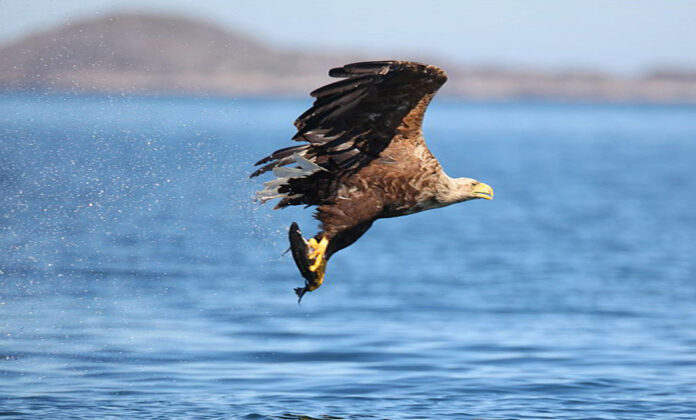EIGHT incidents involving the killing of birds of prey have been recorded in Clare over a ten-year period, a new report on the unnatural deaths of raptors reveals.
The study was carried out by the Raptor Protocol (Recording and Addressing Persecution and Threats to Our Raptors), which involves the National Parks & Wildlife Service (NPWS) and the Veterinary Laboratory Service and State Laboratory and published earlier this month.
Incidents in this county included the poisoning of a White Tailed Sea Eagle at Lough Derg in East Clare in October 2017. Some of the other incidents recorded in this county concern the killing of peregrine falcons in the Loop Head area. The findings have prompted government to announced the setting up of a new unit within the NPWS to address wildlife crime.
Nationally, a wide range of causes of death for the raptors are listed. These include poisoning, persecution, fence, road and turbine collisions. Some of the incidents would have had multiple issues (for example, some birds of prey were both shot and poisoned), while a number of incidents would have been comprised of multiple birds (for example, more than one individual killed by a poisoned bait incident).
“Birds of prey are magnificent creatures in their own right and speak to something deep within us about a wild Ireland, said one of the report’s authors Dr Barry O’Donoghue stated. “They are indicators of the health of our ecosystems and countryside, whether a Barn Owl hunting a hay meadow at night or a Hen Harrier gliding across a moorland. The help of the public has been central in bringing these incidents to light and for highlighting the support that our native birds of prey need.”
While the number of incidents in Clare has been cited as a cause of concern, particularly following the arrival in July of another more breeding pairs of Sea Eagles, the rate is well below that seen in County Wicklow, where 57 incidents were recorded between 2007 and 2019. The authors of the report do note, however, that the likely rate of attacks is far higher than what has been documented
“It is clear … that human, non-habitat related threats to Irish raptors are widespread, with incidents recorded in every county of Ireland,” the report said. “There are notable blackspots for such incidents throughout the country, and particular risk periods, namely springtime for illegal/misuse of poison incidents and late summer/autumn and winter for shooting incidents.”
Reacting to the findings, Minister of State Malcolm Noonan said that the intelligence gathered would inform approaches to tackling these incidents, including by a new Wildlife Crime Unit that will be established within NPWS.

